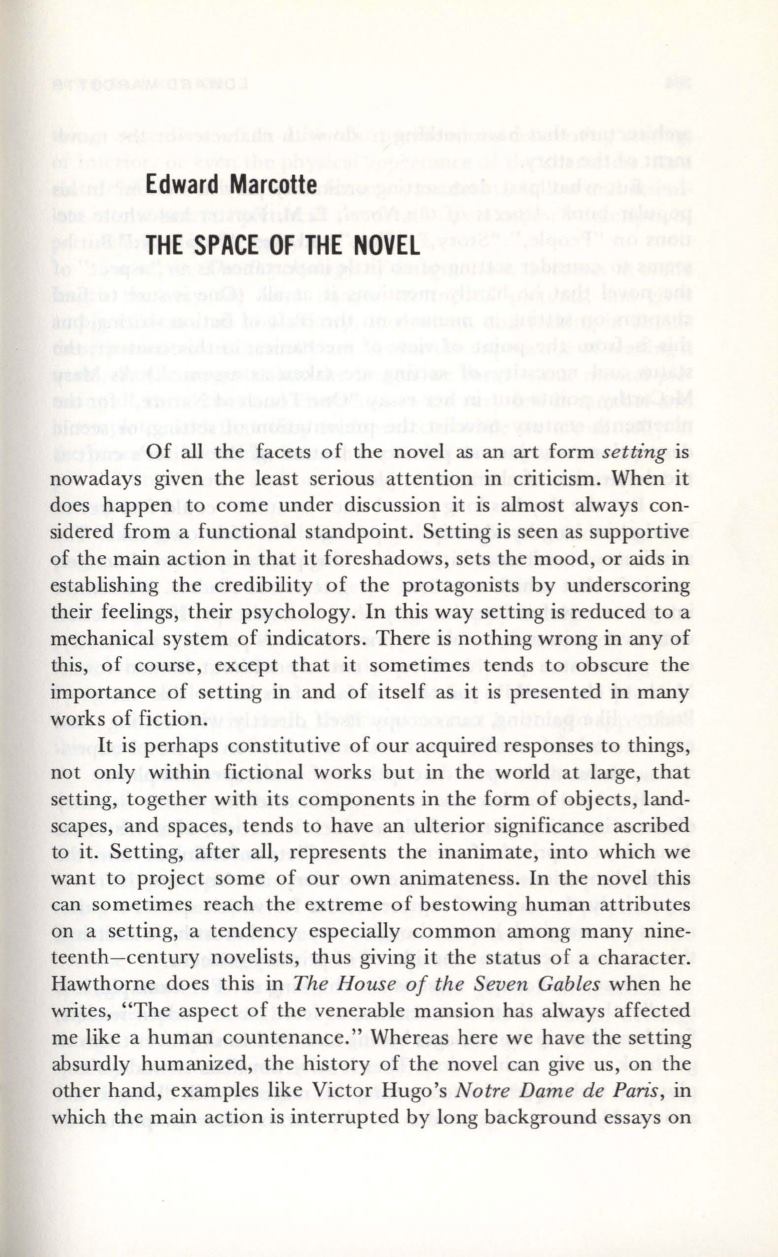
Edward Marcotte
THE SPACE OF THE NOVEL
Of all the facets of the novel as an art form
setting
is
nowadays given the least serious attention in criticism. When it
does happen to come under discussion it is almost always con–
sidered from a functional standpoint. Setting is seen as supportive
of the main action in that it foreshadows, sets the mood, or aids in
establishing the credibility of the protagonists by underscoring
their feelings, their psychology. In this way setting is reduced to a
mechanical system of indicators. There is nothing wrong in any of
this, of course, except that it sometimes tends to obscure the
importance of setting in and of itself as it is presented in many
works of fiction .
It is perhaps constitutive of our acquired responses to things,
not only within fictional works but in the world at large, that
setting, together with its components in the form of objects, land–
scapes, and spaces, tends to have an ulterior significance ascribed
to it. Setting, after all, represents the inanimate, into which we
want to project some of our own animateness. In the novel this
can sometimes reach the extreme of bestowing human attributes
on a setting, a tendency especially common among many nine–
teenth-century novelists, thus giving it the status of a character.
Hawthorne does this in
The House of the Seven Gables
when he
writes, "The aspect of the venerable mansion has always affected
me like a human countenance." Whereas here we have the setting
absurdly humanized, the history of the novel can give us, on the
other hand, examples like Victor Hugo's
Notre Dame de Paris,
in
which the main action is interrupted by long background essays on


